‘Innovation’ was the centre of attention at the inaugural edition of the Innovation First Communication Conclave that took place at The Leela Ambience, Gurgaon on Wednesday, March 14th. The time had come for putting ‘Innovation’ first – that was indeed the action line for the day, as Corporate Communication experts shared their varied points of view.
As a listener, I got on to tracking the winding path of innovation with the flow of conversation. Soon I realized that innovation was accelerating at a dizzying pace, during the interaction!
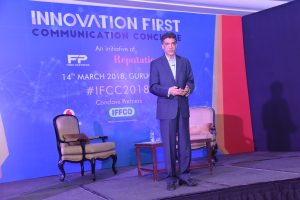
Vishal Wanchoo, President & CEO – GE South Asia
“Innovation is at the heart of what we think about at GE,” shared Vishal Wanchoo, President and CEO, GE South Asia, and went on to say that they do believe that communication is the basis of innovation in this century. Highlighting the role of creating and incubating growth opportunities in GE, we came to know that their culture encouraged failure, because there can be learning from failure! When Arun Sudhaman (The Holmes Report) asked how important is communication in a company that embraces failure, Vishal was firm in asserting that “communication is the bedrock of the organisation”. And, in terms of measuring, he was quick to say that they measure in a simple way, looking at the environmental and social impact. When Arun brought up the fact that in the Innovation Barometer, there was a significant increase in the perception of India as a market, he said that India should be thinking about what we should do to make an impact globally.
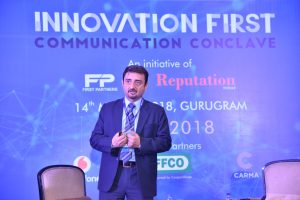
Dilip Yadav, Co-founder – First Partners
What does innovation mean? Why is it relevant today? What are the innovation strategies that innovators adopt? These were some of the questions that were studied by the survey undertaken by First Partners (who were promoters of this event, along with Reputation Today). Looking at big brands that have triumphed, it could be concluded that the ‘inventor’ is dead, and it was long live ‘innovation’! Other questions that were scrutinised were – how to institutionalise innovation? What builds a strong culture of innovation within an organisation? What areas are leading innovation in communication today? Here politics and entertainment appeared strongest in that order, followed by business, not-for-profit and government. Emphasising the “innovation outlook” the answer that popped up after focusing on how to consistently deliver ‘Innovation In Communication’ was – think out-of-the-box, for interestingly, it is not about integration anymore!
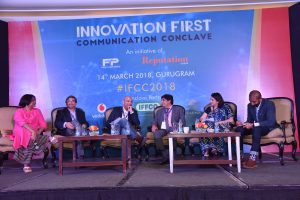
(L-R) Paroma Roy Chowdhury, Jaideep Gokhale, Ishteyaque Amjad, Ajay Davessar, Shefali Sapra, Arun Sudhaman
Can communication lead innovation? That was the question panel moderator Arun Sudhaman, put forth to kick off the discussion on Does innovation in business have a connection with innovation in communication. Innovation took on different hues here. It has to have some purpose, and bring about solutions said Ishteyaque Amjad (Coca Cola India). The primary narrative is the core business and innovation has to follow, was shared by Paroma Roy Chowdhury (SoftBank). Communication creates culture and we need to sense what relationships we need to create to get the spark of innovation going, said Jaideep Gokhale (Tetra Pak). When the topic of addressing an overdose of innovation came up, Shefali Sapra (Danone India) revealed that for a company it is a challenge and that it starts by engaging and listening to the stakeholders. Then surfaced an Innovation theory! Everyone loves an acronym exclaimed Arun Sudhaman as Ajay Davessar (HCL Technologies) expanded on his innovative story – LOVE, which consisted of Listening, Organising, Valuating and Echoing.
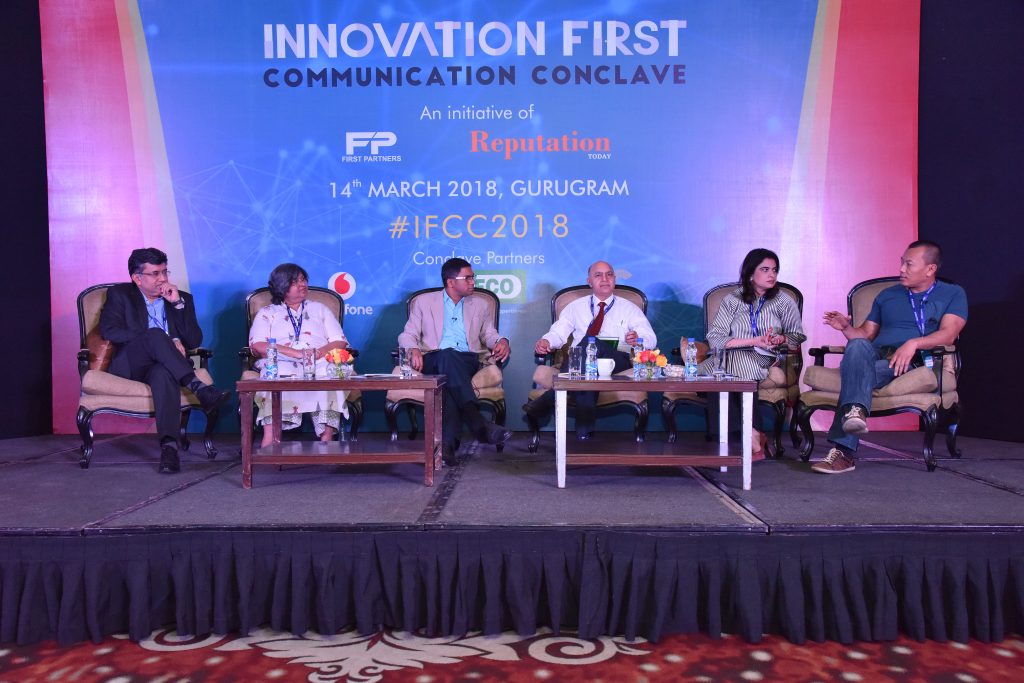
(L to R) Shrutidhar Paliwal, Sarita Bahl, Pranjal Sharma, Arun Arora, Jyotsna Ghoshal, Senjam Raj Sekhar
Then innovation got connected with winning. Panel Discussion 2 focused on Why innovation in business and communication is key to win in a complex market like India. The real challenge is to set the right conditions for innovation to flourish. It can be a complex task but there are rich rewards for organisations that get it right. And, it can be done! Paving the way for presenting three important points in innovation, Senjam Raj Sekhar (Flipkart) gave his take that innovation equals creativity. And the three points were – a) it has to solve the problem, b) it has to be disruptive and c) it has to be copied. Innovation has to be a responsibility as it is a need pointed out Sarita Bahl (Bayer India). We can go back to the concept of KISS – Keep it Short and Simple, said Arun Arora (Cairn India). When the moderator Pranjal Sharma (Author – Kranti Nation) asked what is the definition of innovation, Jyotsna Ghosal (MSD India) was quick on the update as she said, “It is to think inside-the-box and not outside-the-box!” Shrutidhar Paliwal (Aptech Limited) felt the real challenge is in the internal communication. As communication dealers what do you first think of message or innovation, asked Pranjal Sharma and pat came the answer from Senjam – “Narrative”, while Arun suggested that we can have an Innovation Room, where we can sit and innovate!
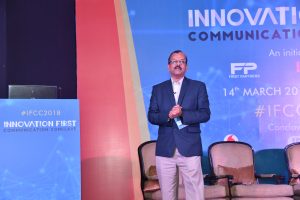
Vijay Menon, Author – Innovative Stories from India Inc
As the event came to a close, it was Vijay Menon, author of Innovation Stories from India Inc did what he proposed to do as he took centrestage – move us away from a communication-centric environment to a business-centric one.
And then, innovation took a sharp turn as we reached the end of the road. Innovation is exploring. The parting shot came in the words of Bhaskar Bhatt, Titan whom he quoted – “We can’t lose that restlessness…we should continue to explore.”
Click here to view pictures from #IFCC2018.

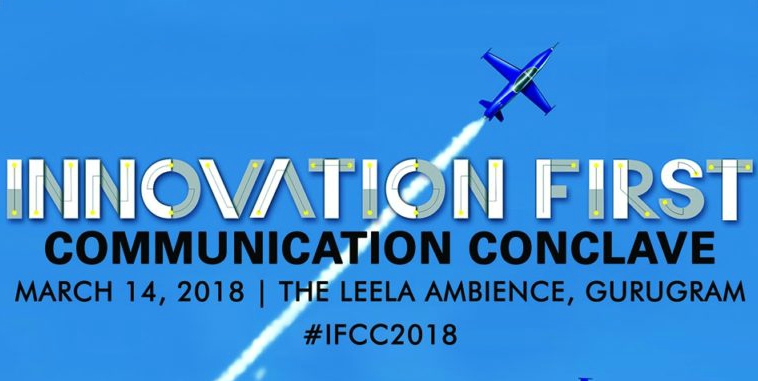




Be the first to comment on "Re-imagining Innovation at the Innovation First Communication Conclave"